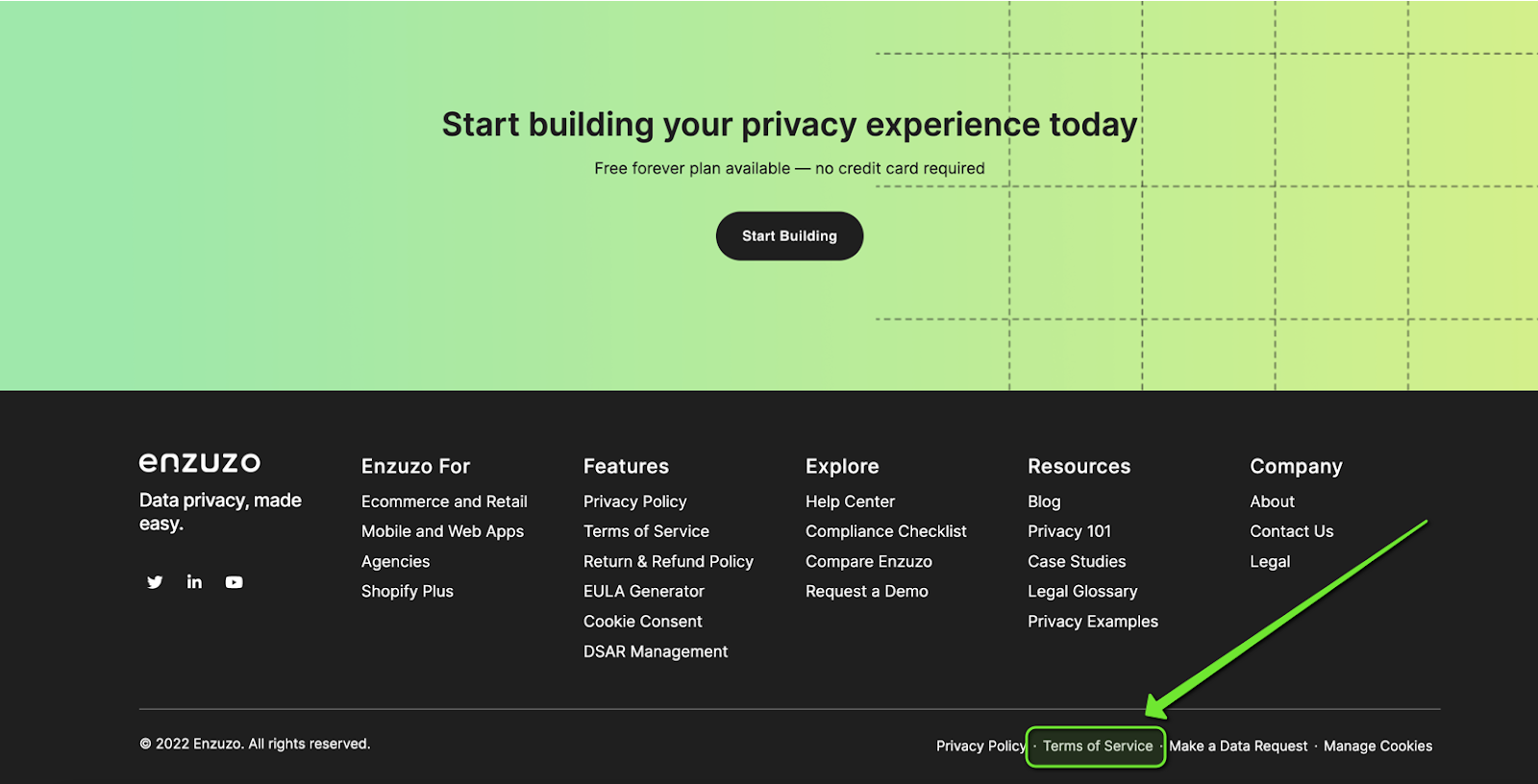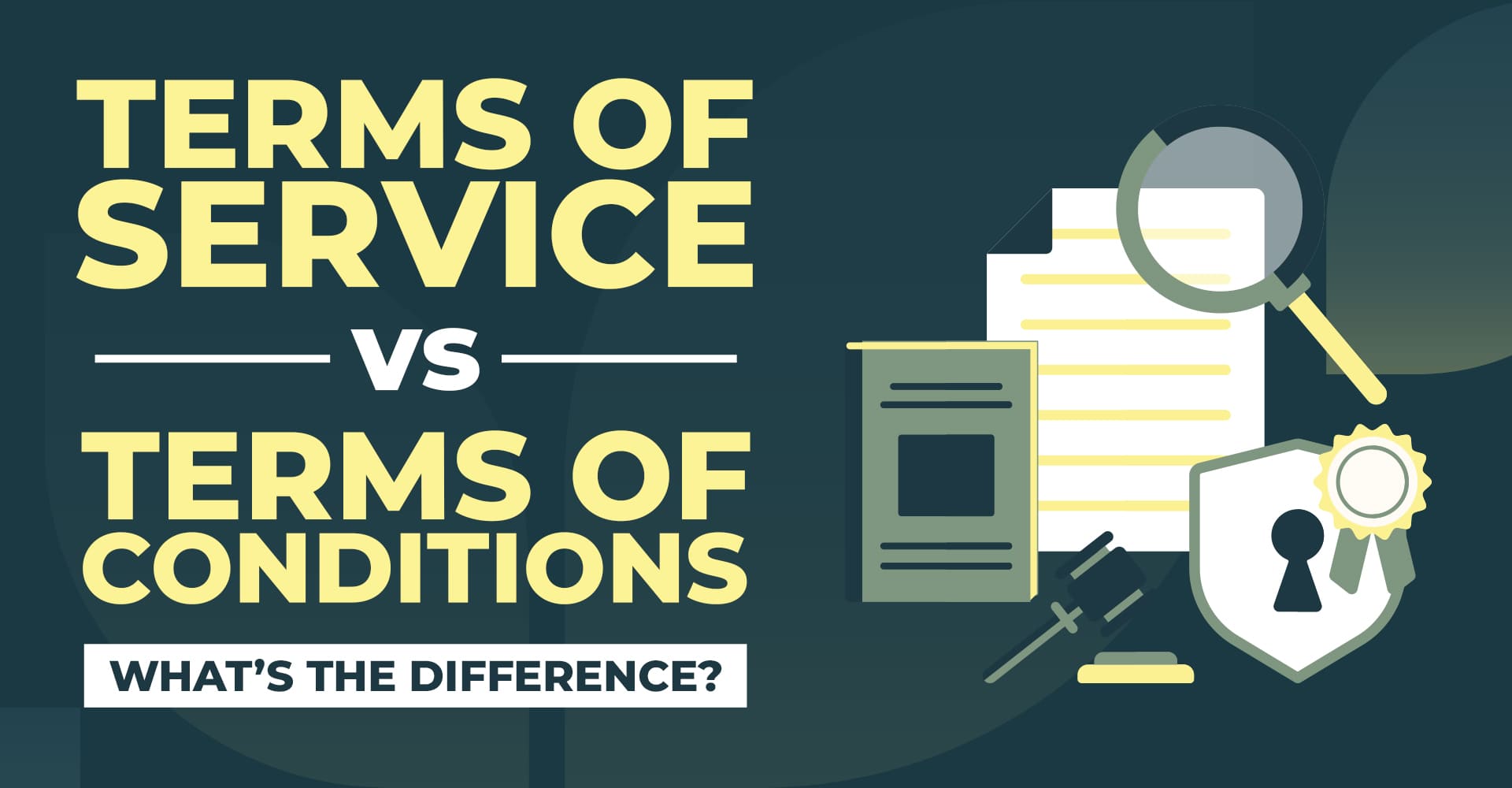If you’re reading this, you’ve probably stumbled across some pages that say ‘terms of service’, others that discuss ‘terms of use’, and more that call attention to ‘terms and conditions’. If you’re perplexed, don’t worry. In this post, we’ll discuss Terms of Service vs Terms of Use vs Terms and Conditions and tell you if there’s any difference between them.
Terms of Service vs Terms of Use
Legally speaking, there is no difference between terms of service and terms of use. Both are legal contracts that define the relationship between a digital business and its users. The name is entirely down to a company’s preference — it does not have any bearing on the outcome.
Terms of Service vs Terms and Conditions
There is no legal distinction between terms of service and terms and conditions. If you come across either page, assume that they are referring to the same thing — a legally binding, contractual agreement that outlines the rights of website users, restrictions on their activities, and the company’s defined rules.
Let’s See Some Examples
To show you what we mean, let’s go through how some well-known companies name their pages.
If you look at these pages, they’re all conveying the same thing: the rules and regulations that all users must abide by. The names being slightly different from each other has no legal ramifications as they’re essentially the same.
How Do I Generate My Own?
There’s a couple of ways to generate your own terms and conditions page. We have a guide on how to write terms and conditions that discusses 14 key sections to include in your document. This is meant for DIY-ers, who don’t want to engage with a lawyer and are comfortable writing it themselves with a bit of guidance.
Read that article and modify our free terms and conditions template to suit your business needs.
If you would rather have a robot handle it on your behalf, we have a separate resource that discusses generating and adding terms and conditions to your website. You don’t need a template to modify, Enzuzo’s terms and conditions generator will handle it on your behalf.
The robots in question will ask you a few pertinent questions about your business, and generate one that’s 100% compliant and legally secure.
-png.png?width=800&height=300&name=CTA%20Graphic%20-%20Yellow%20(1)-png.png)
Where Do I Show My Terms and Conditions Page?
It really depends on your personal aesthetic, but terms and conditions can be displayed in a few separate ways. For example, Enzuzo prefers to link to it from the website’s footer navigation.

You could also remind users in a marketing popup message that agreeing to transact with the website, such as signing up for the newsletter, means an automatic agreement with the terms and conditions.

The only caveat is that you must display your terms and conditions page prominently. It can’t be hidden behind a subdomain or buried under some obscure page that gets no traffic. Putting it on your homepage is recommended since it saves you from legal hassles later down the road. And displaying it in places like checkout or downloads is a smart move, too.


-png.png?width=800&height=300&name=CTA%20Graphic%20-%20Yellow%20(1)-png.png)